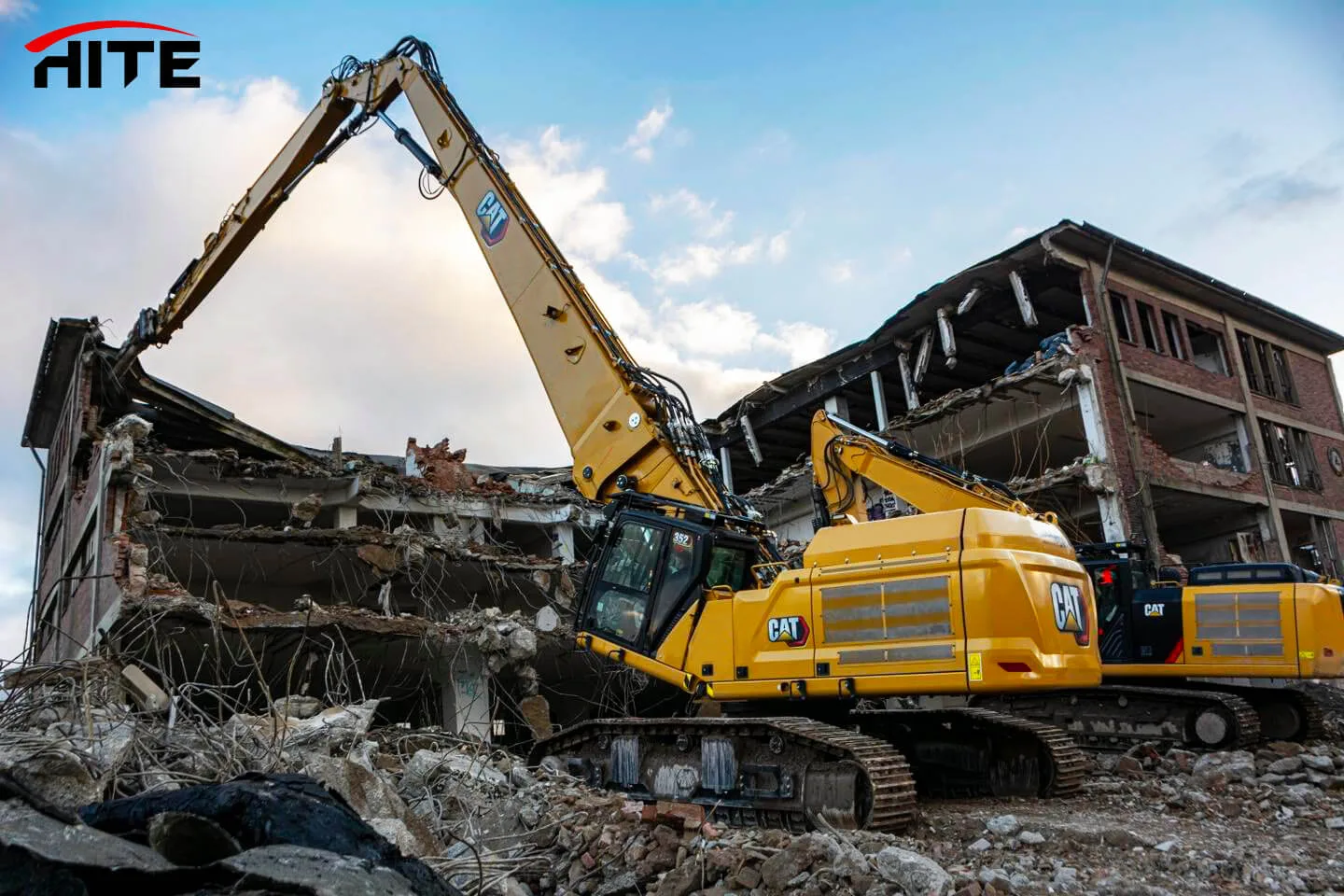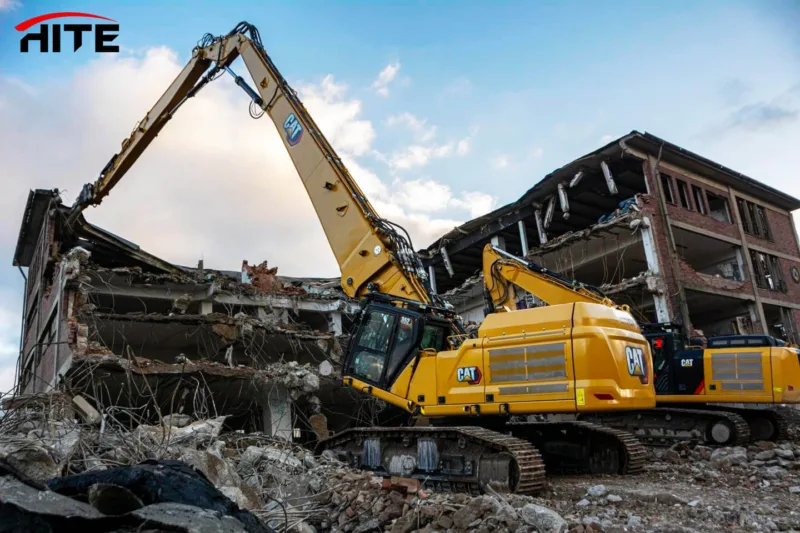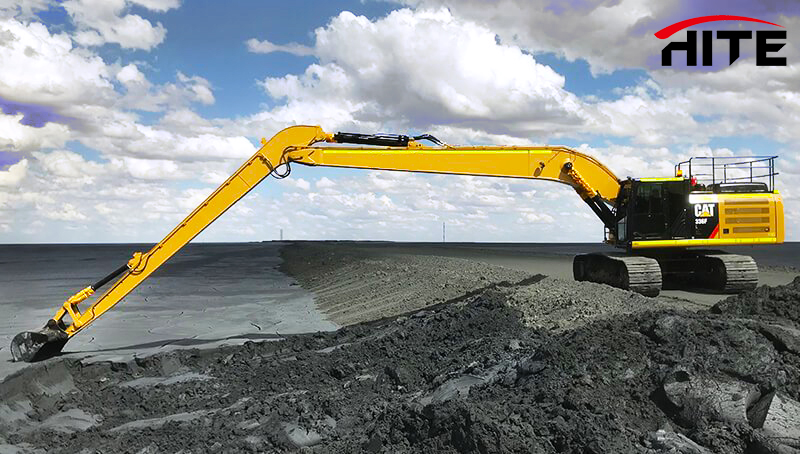Demolition projects are intricate tasks that demand meticulous planning, the right equipment, and an understanding of safety protocols to prevent accidents and ensure the efficiency of operations. Among the equipment pivotal for demolition, the excavator fitted with a demolition arm stands out due to its power and versatility. However, using such a powerful machine requires adherence to strict precautions to ensure safety and operational success. This article delves into the essential safety measures and best practices for using an digger demolition boom during demolition operations.
Understanding the Digger Demolition Boom
Before diving into the precautions, it’s crucial to understand what a demolition arm is. Essentially, it’s a specialized attachment designed for excavators, transforming them into powerful machines capable of demolishing buildings, structures, and other constructions with precision and efficiency. The demolition arm can vary in size and strength, depending on the excavator model and the specific demolition task at hand.
Precautions and Best Practices
-
Thorough Planning and Site Assessment
Before any demolition activity, conduct a comprehensive site assessment. This involves identifying the structure’s materials, potential hazards (like asbestos or other harmful substances), and understanding the building’s layout. A well-thought-out plan that considers the demolition sequence, potential risks, and safety measures is essential for a successful operation.
-
Digger Demolition Boom Operator Training and Competence
Ensure that operators are thoroughly trained and competent in using the excavator and demolition arm. This includes understanding the machinery’s capabilities, limitations, and the specific techniques required for different types of demolition work. Continuous training and certification updates are crucial to maintaining safety and compliance with regulations.
-
Routine Inspection and Maintenance
Regularly inspect the excavator and demolition arm to ensure they are in optimal working condition. This includes checking hydraulic systems, attachment points, and the arm itself for wear and tear or potential faults. Routine maintenance not only prevents equipment failure but also extends the life of the machinery.
-
Using the Right Attachment
The demolition arm comes with various attachments, such as crushers, shears, and hammers, each designed for specific materials and demolition tasks. Choosing the right attachment based on the structure’s material and the demolition plan is crucial for efficient and safe operation.
-
Maintaining a Safe Distance
Operators should maintain a safe working distance from the demolition site to minimize the risk of injury from flying debris, dust, and other hazards. The excavator should be positioned on stable ground to ensure it remains secure during operations.
-
Implementing Dust Control Measures
Demolition can generate significant amounts of dust, which can be hazardous to health and reduce visibility. Using water sprays or dust suppression systems to minimize airborne dust is essential for maintaining a safe working environment.
-
Debris Management
Properly managing debris during demolition is crucial to prevent accidents and ensure the site remains navigable. Regularly clearing debris and having a systematic disposal plan in place helps maintain safety and efficiency.
-
Monitoring Structural Integrity
During demolition, continuously monitor the structural integrity of the building or structure being demolished. This helps in anticipating collapses or unexpected movements, allowing for timely adjustments to the demolition plan and preventing accidents.
-
Emergency Preparedness
Have a comprehensive emergency response plan in place, including evacuation routes, first aid provisions, and emergency contact numbers. Regular drills and briefings can help ensure that all team members know how to act in case of an emergency.
-
Legal and Environmental Compliance
Ensure compliance with all relevant legal and environmental regulations. This includes obtaining necessary permits, adhering to noise restrictions, and ensuring that demolition debris is disposed of responsibly.
Conclusion
The digger demolition arm is a potent tool in the arsenal of demolition equipment, capable of bringing down structures efficiently and safely when used correctly. Adhering to the precautions and best practices outlined above is essential for minimizing risks and ensuring the safety of operators and bystanders alike. By thoroughly planning, ensuring operator competence, and maintaining equipment, demolition operations can be carried out smoothly, marking the successful completion of yet another project in the challenging yet rewarding field of demolition.
In the realm of construction and demolition, safety and efficiency are paramount. As technology advances and new methodologies emerge, the industry must continue to prioritize these principles, ensuring that every project not only meets its objectives but also protects the lives and well-being of everyone involved.







Leave A Comment